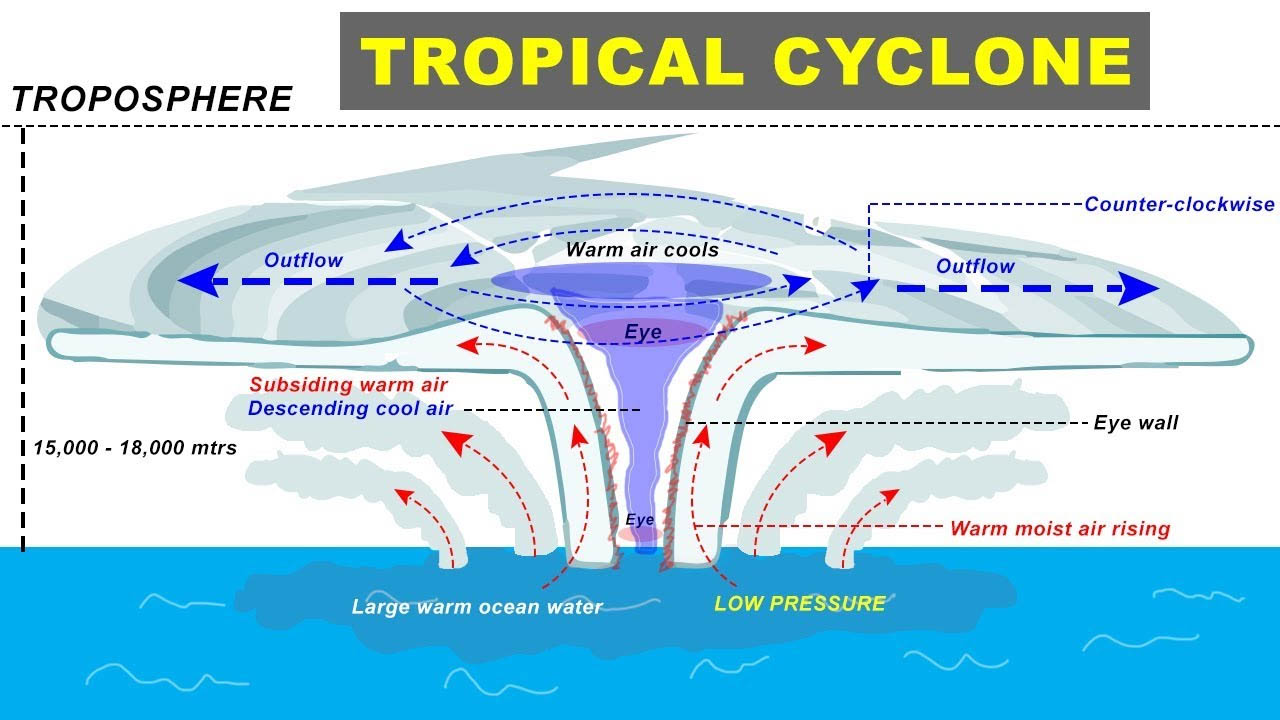Geography
Cyclone Asani
- 09 May 2022
- 6 min read
For Prelims: Cyclone Asani, IMD, Cyclone nomenclature.
For Mains: Cyclone Formation, Tropical Cyclone.
Why in News?
The India Meteorological Department (IMD) has predicted the Cyclone Asani to intensify into a ‘severe cyclone’ over Southeast regions of Bay of Bengal.
- The name Cyclone Asani has been given by Sri Lanka. It means 'wrath' in Sinhalese.
- Cyclones that Hit India in 2020-21: Tauktae, Yaas, Nisarga, Amphan.
What is the Occurrence of Cyclones in India?
- India has a bi-annual cyclone season that occurs between March to May and October to December. But on rare occasions, cyclones do occur in June and September months.
- Cyclone Gulab became the third cyclone of the 21st century to make landfall over the east coast in September, after tropical cyclone Daye in 2018 and Pyarr in 2005.
- Typically, tropical cyclones in the North Indian Ocean region (Bay of Bengal and Arabian Sea) develop during the pre-monsoon (April to June) and post-monsoon (October to December) periods.
- May-June and October-November are known to produce cyclones of severe intensity that affect the Indian coasts.
What is Classification?
- The IMD classifies cyclones on the basis of the Maximum Sustained Surface Wind Speed (MSW) they generate.
- The cyclones are classified as severe (MSW of 48-63 knots), very severe (MSW of 64-89 knots), extremely severe (MSW of 90-119 knots) and super cyclonic storm (MSW of 120 knots or more). One knot is equal to 1.8 kmph (kilometers per hour).
What are the Tropical Cyclones?
- A tropical cyclone is an intense circular storm that originates over warm tropical oceans and is characterized by low atmospheric pressure, high winds, and heavy rain.
- A characteristic feature of tropical cyclones is the eye, a central region of clear skies, warm temperatures, and low atmospheric pressure.
- Storms of this type are called hurricanes in the North Atlantic and eastern Pacific and typhoons in SouthEast Asia and China. They are called tropical cyclones in the southwest Pacific and Indian Ocean region and Willy-willies in north-western Australia.
- Storms rotate counterclockwise in the northern hemisphere and clockwise in the southern hemisphere.
- The conditions favourable for the formation and intensification of tropical storms are:
- Large sea surface with temperature higher than 27° C.
- Presence of the Coriolis force.
- Small variations in the vertical wind speed.
- A pre-existing weak low- pressure area or low-level-cyclonic circulation.
- Upper divergence above the sea level system.
UPSC Civil Services Examination, Previous Year Questions
Q. Consider the following statements: (2020)
- Jet streams occur in the Northern Hemisphere only.
- Only some cyclones develop an eye.
- The temperature inside the eye of a cyclone is nearly 10ºC lesser than that of the surroundings.
Which of the statements given above is/are correct?
(a) 1 only
(b) 2 and 3 only
(c) 2 only
(d) 1 and 3 only
Ans: (c)
Exp:
- Jet Stream is a geostrophic wind blowing horizontally through the upper layers of the troposphere, generally from west to east, at an altitude of 20,000 - 50,000 feet. Jet Streams develop where air masses of different temperatures meet. So, usually surface temperatures determine where the Jet Stream will form. Greater the difference in temperature, faster is the wind velocity inside the jet stream. Jet Streams extend from 20° latitude to the poles in both hemispheres. Hence, statement 1 is not correct.
- Cyclones are of two types, tropical cyclone and temperate cyclone. The center of a tropical cyclone is known as the ‘eye’, where the wind is calm at the center with no rainfall. However, in a temperate cyclone, there is not a single place where winds and rains are inactive, so the eye is not found. Hence, statement 2 is correct.
- The warmest temperatures are found in the eye itself, not in the eyewall clouds where the latent heat occurs. The air is saturated only where convective vertical motions pass through flight level. Inside the eye, the temperature is greater than 28°C and the dewpoint is less than 0°C. These warm and dry conditions are typical of the eyes of extremely intense tropical cyclones. Hence, statement 3 is not correct.
- Therefore, option (c) is the correct answer.





